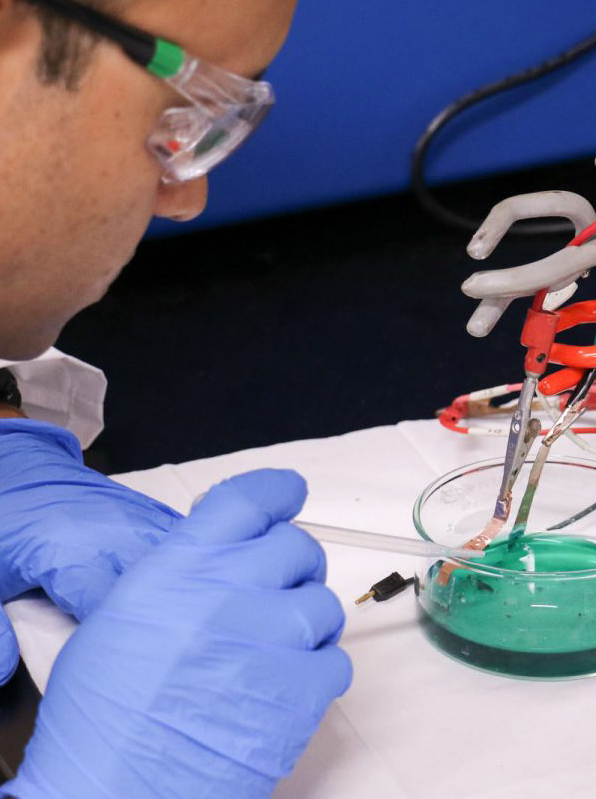News Story
Tiny Device to Rapidly Detect Heart Attacks

Reprinted with permission from https://today.ucf.edu/ucf-researcher-working-develop-device-rapidly-detect-heart-attacks/ By ROBERT WELLS on October 8, 2018
When a heart attack strikes, every second counts, which makes early detection that one is occurring critical for saving lives.
Speeding up this detection process is what a University of Central Florida researcher and alumnus of the University of Maryland is working on with the help of a grant from the National Science Foundation to develop a rapid heart attack detection device.
“Our goal here is to basically remove that guess work and give first responders, EMTs and hospitals the ability to go in, take a small blood sample and confirm that such an event has indeed taken place,” says Parag Banerjee, an associate professor of materials science and engineering at UCF and principal investigator of the research. He graduated in 2011 with a PhD in materials science and engineering from UMD’s College Park campus.
While tests for heart attacks currently exist, they are slow and require specially trained personnel. Since heart attacks prevent blood from bringing oxygen to the heart, the faster a heart attack can be diagnosed, the quicker the blood flow can be restored, preventing further damage to the heart and potentially saving a person’s life. Delayed treatment of heart attacks could occur if they are misdiagnosed as a less serious medical problem, such as heart burn or a panic attack.
Banerjee and co-principal investigator Srikanth Singamaneni, a professor and pioneer in biosensors at the School of Engineering and Applied Science at Washington University in St. Louis, are working together on the project.
The device is being designed to detect cardiac troponin I, a protein that is released into the blood when there is damage to heart muscle cells, thus serving as a biological indicator that a heart attack has occurred.
Banerjee described the device as a “lab-on-a-chip.” A sample of blood dropped onto a chip would start the test.
The chip will consist of gold nanoparticles whose surfaces will carry tiny cavities like mold casts, specifically in the shape of cardiac troponin I. Much like a key that only fits a certain lock, only cardiac troponin I will fit in that shape. Once the protein rests in this cavity, changes in the gold’s electrical conductivity from binding with the protein will result in a readout, such as an illuminated LED light, thus indicating the presence of cardiac troponin I in the blood.
“Each protein has a very specific structure, and it is this structure that imparts them an ability to do specific tasks in our body,” Banerjee says. “We plan to exploit this very structure of the cardiac troponin I molecule to detect it.”
The new test being developed is novel in its gold nanoparticle cavity design as well as the potential speed and ease of use it could offer.
At this stage of the development, the researchers will be combining their knowledge of the electrical properties of gold nanoparticles and of creating molecule-specific cavities to make the device and begin testing its output when cardiac troponin I binds with the gold nanoparticles.
Banerjee said the concept of making molecular cavities on gold nanoparticles could also be potentially used to detect other molecules in a variety of situations, including testing for molecules that are a signature for cancer or for detecting explosives such as TNT.
Banerjee received his doctorate in material science and engineering from the University of Maryland, his master’s in materials science from Washington State University and his bachelor’s degree in metallurgical and materials engineering from the Indian Institute of Technology. He is also a member of UCF’s Energy Conversion and Propulsion faculty cluster.
Published October 25, 2018









